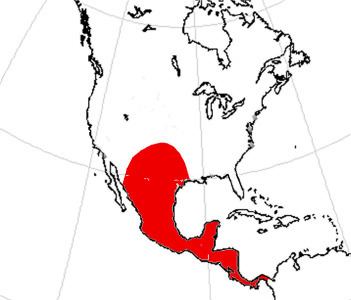Rank Genus | Phylum Chordata Order Even-toed ungulate | |
 | ||
Similar Even‑toed ungulate, Protoceratidae, Kyptoceras, Protoceras, Syndyoceras | ||
Paratoceras is a medium-sized extinct genus of Artiodactyla, of the family Protoceratidae, endemic to North America from the Miocene epoch, 16.3—15.97 Ma, existing for approximately 0.33 million years.
Contents
Taxonomy
Paratoceras was named by Frick (1937). Its type is Paratoceras macadamsi. It was assigned to Protoceratidae by Frick (1937) and Carroll (1988); and to Protoceratinae by Webb (1981), Prothero (1998), Webb et al. (2003) and Prothero and Ludtke (2007).
Morphology
Poabromylus resembled deer. However they were more closely related to camelids. In addition to having horns in the more usual place, protoceratids had additional, rostral horns above the orbital cavity. Poabromylus was larger than Eocene members of Tylopoda: Heteromeryx, Leptoreodon, Leptotragulus, Toromeryx, Trigenicus, and Poabromylus.
Body mass
A single fossil specimen of Poabromylus was measured by M. Mendoza, C. M. Janis, and P. Palmqvist for body mass. The specimen was determined to weigh:
Fossil distribution
Fossils have been recovered from:
